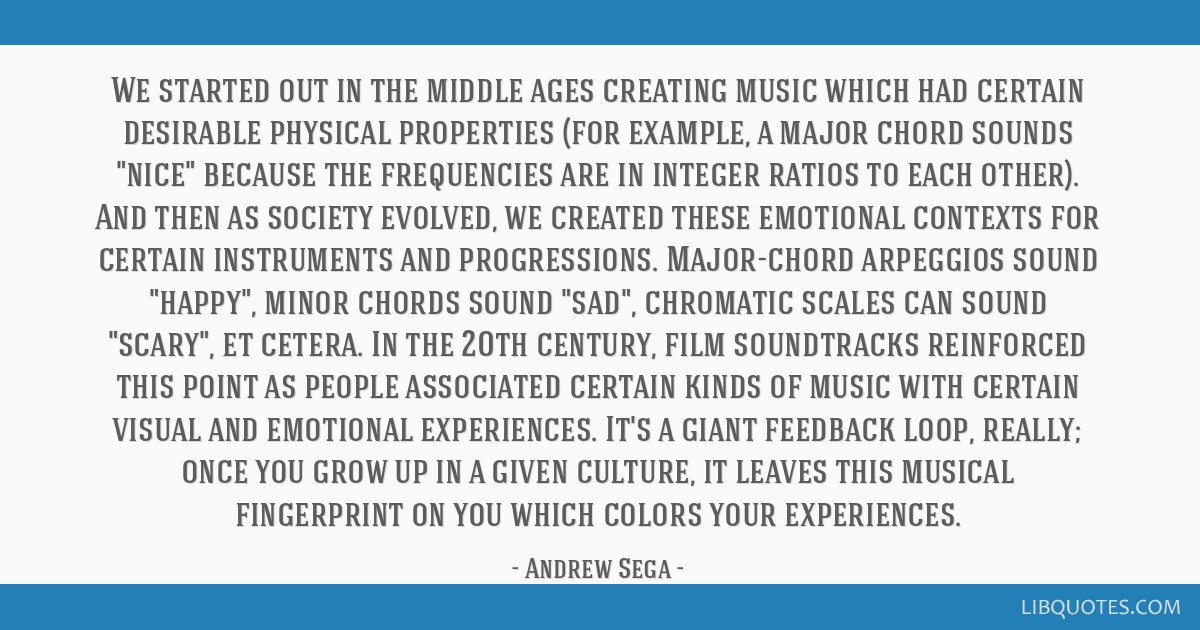We started out in the middle ages creating music which had certain desirable physical properties (for example, a major chord sounds "nice" because the frequencies are in integer ratios to each other). And then as society evolved, we created these emotional contexts for certain instruments and progressions. Major-chord arpeggios sound "happy", minor chords sound "sad", chromatic scales can sound "scary", et cetera. In the 20th century, film soundtracks reinforced this point as people associated certain kinds of music with certain visual and emotional experiences. It's a giant feedback loop, really; once you grow up in a given culture, it leaves this musical fingerprint on you which colors your experiences.
Andrew Sega Shrine interview, 2011























